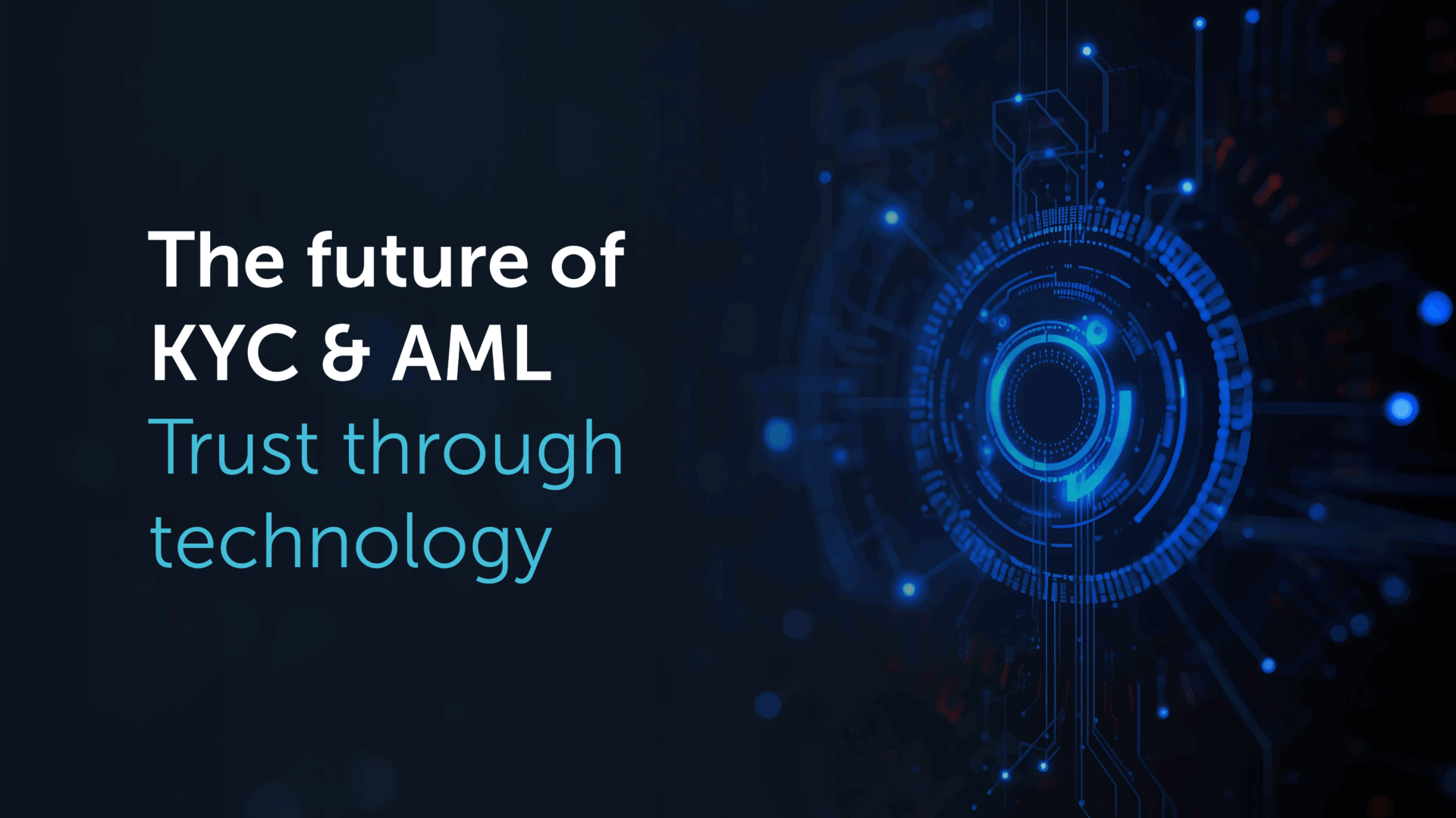What will KYC and AML look like in the next decade?

The future of compliance is at a turning point
Over the next decade, regulatory, technological, political, and competitive forces will reshape Know your Customer (KYC) and Anti-Money Laundering (AML). Consequently, compliance will shift from box-ticking to proving outcomes, ensuring transparency, and sharing data responsibly.
A new era of alignment and accountability
Regulators are harmonizing AML frameworks globally. For example, the FATF, EU AMLA, and U.S. FinCEN emphasize risk-based, evidence-driven decisions. From Washington to Brussels to Singapore, regulators are converging on the principle of effectiveness over procedure.
Meanwhile, political leaders link financial inclusion with integrity. New rules in the U.S. and Europe require banks to justify exclusions, rather than relying on blanket de-risking. Therefore, institutions must explain both who they exclude and why.
Technology as a catalyst
Artificial Intelligence (AI) is increasingly embedded across the compliance lifecycle, from document parsing to model-driven investigations. However, regulators require responsible AI, including fairness, transparency, and human oversight. Initiatives like MAS FEAT, the FCA Supercharged Digital Sandbox, and the EU AI Act establish global governance standards.
Similarly, digital identity technologies are moving to adoption. Reusable IDs and verifiable credentials compress onboarding, enable consent-driven KYC, and reduce repetitive document collection. Therefore, identity becomes portable, verified, and continuously trusted.
The privacy-preserving revolution
Data privacy and localization laws are forcing financial institutions to rethink data sharing. Banks are shifting from moving data to moving proofs.
Technologies such as Private Set Intersection (PSI) and Zero-Knowledge Proofs (ZKPs) enable verification without exposing underlying data. Whether a customer is a PEP or appears in adverse-media lists.
In a world of differential privacy and encrypted analytics, “yes/no” answers replace bulk transfers, and compliance aligns with confidentiality. These developments are not just technical; they signal the emergence of privacy-preserving KYC, a model that respects data sovereignty while maintaining AML effectiveness.
Competition through collaboration
Information-sharing networks like Joint Money Laundering Intelligence Taskforce (JMLIT) and COSMIC are evolving from pilots to permanent ecosystems. Regulators acknowledge that financial crime prevention requires collective effort. Therefore, the next competitive advantage will come from intelligent integration of shared intelligence, safely and quickly.
A glimpse of the future of compliance
The likely scenarios of the next decade are already forming:
- Wallets win – interoperable identity wallets make onboarding instantaneous
- Outcomes-tested AML – regulators evaluate results, not checklists
- Sanctions-first world – geopolitical fragmentation drives precision screening
- Privacy-preserving KYC – compliance built on proofs, not data transfers
- Crypto mainstreams compliance – blockchain analysis merges with traditional AML
All scenarios highlight a shift from reactive compliance to proactive intelligence.
The role of RegTech
Firms like Encompass are already demonstrating how automation, authoritative data, and Corporate Digital Identity (CDI) can transform the compliance function. By combining real-time data aggregation with graph-based analytics, financial institutions can visualize risk relationships across jurisdictions, accelerate onboarding, and maintain ongoing due diligence with auditable precision.
The opportunity is clear: those who embrace intelligent, standards-based automation today will lead tomorrow’s compliance landscape.
From burden to strategic differentiator
The next decade will transform KYC and AML from regulatory obligations into strategic enablers of trust and growth. The question for banks is no longer “how do we comply?” but “how do we compete through compliance?”
Key takeaways
- Shift from process to outcomes
Regulators across jurisdictions now assess effectiveness, not effort. Institutions must prove how controls reduce actual financial crime, not just demonstrate that procedures exist. - Embrace reusable digital identities
CDI is redefining onboarding. Early adoption will reduce friction, enhance security, and future-proof against evolving EU and UK standards. - Integrate AI responsibly
AI can accelerate investigations and reduce false positives, but only with explainability, bias controls, and human oversight. Build governance frameworks before scaling automation. - Invest in privacy-preserving KYC
Cross-border data transfer limits and localization laws are here to stay. Begin pilots with privacy-enhancing technologies to meet compliance while maintaining data sovereignty. - Strengthen collaborative defenses
Join or initiate participation in information-sharing partnerships. Shared intelligence will be the new competitive moat, particularly for fraud and sanctions screening.
By investing now in CDI, responsible AI, and privacy-preserving data exchange, banks can build systems that not only satisfy regulators but also earn the enduring trust of customers and society alike.
Finally, compliance does not need to be a back-office cost, it can be a front-line differentiator. The winners of the next decade will be those that integrate regulatory foresight, technological innovation, and data ethics into a single operating philosophy: intelligent compliance.
Discover corporate digital identity from Encompass